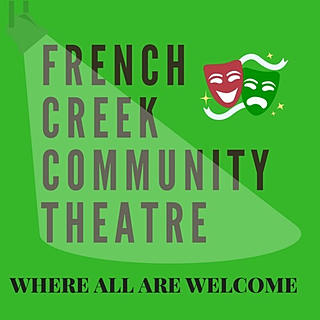Unveiling the Curtain: A Behind-the-Scenes Look at Putting on a Community Theater Show
- fcctheatre
- Apr 4, 2024
- 3 min read
Updated: Apr 16, 2024

Credit: Jen Craven
The allure of the stage, the thrill of the spotlight, the magic of storytelling—community theater brings all of these elements together to create captivating performances that touch hearts and minds. But have you ever wondered about the intricate process that transforms an idea into a full-fledged production? Let’s take a journey through the step-by-step process of how community theater works, from idea conception to the final curtain call.
1. Conception of Ideas: Every great production begins with a spark of creativity. Directors, producers, and theater enthusiasts brainstorm ideas for the next show. This could be anything from a beloved classic to a contemporary musical or even an original script. The goal is to select a production that resonates with the community and offers engaging roles for a diverse cast.
2. Script Selection and Licensing: Once the idea is solidified, the next step is script selection and licensing. Acquiring the rights to perform a specific play or musical involves contacting the licensing agency that represents the work. Licensing fees can vary widely depending on factors such as the popularity of the show, the size of the audience, and the number of performances. These fees are essential to support the creators and ensure that their work is properly recognized and compensated.
3. Auditions: Auditions mark the beginning of the casting process. Community theaters often hold open auditions, welcoming individuals of all ages and experience levels to participate. Actors often perform a spoken or sung selection to demonstrate their skills to secure a role. Directors assess potential, chemistry among cast members, and suitability for the characters.
4. Casting: With auditions complete, the casting puzzle comes together. Directors carefully select actors for each role based on their auditions. The goal is to create a balanced ensemble that can bring the story to life.

5. Rehearsals: Cast members gather to read through the script, learn their lines, and start exploring their characters. As rehearsals progress, actors work on blocking (stage movement), refine their performances, and develop their characters' relationships. Rehearsal schedules can be demanding, with weeks of intense preparation leading up to opening night.
6. Set and Costume Design: While actors rehearse, a team of designers and builders works behind the scenes to create the physical world of the production. Set designers design the backdrop and props, while costume designers create outfits that reflect each character's identity and personality. These elements play a crucial role in transporting the audience into the story's world.
7. Technical Rehearsals: Technical rehearsals bring together the various technical aspects of the production, such as lighting, sound, and special effects. Crew members coordinate cues, ensuring that every technical element enhances the storytelling without distracting from it.
8. Dress Rehearsals: As opening night approaches, dress rehearsals allow the cast to rehearse in full costumes, hair, and makeup. This is the final opportunity to fine-tune performances and ensure that all technical aspects run smoothly.

9. Promotion and Marketing: To fill the seats, community theaters engage in extensive promotion and marketing efforts. This includes creating posters, flyers, and digital advertisements, as well as utilizing social media platforms to spread the word. Local partnerships and collaborations also contribute to successful marketing campaigns.
10. Performances: The moment of truth arrives with the first performance. The cast, crew, and everyone involved come together to showcase their hard work and dedication. Each performance is a unique experience, with live energy and the connection between actors and audience members creating something truly special.
Community theater is a labor of love that involves numerous steps, from the initial idea to the final bow. It's a collaborative effort that thrives on the passion and dedication of all involved, from actors and directors to designers and technicians. As you watch a community theater production, you're witnessing the result of countless hours of hard work, creativity, and teamwork. So, the next time you applaud a heartfelt performance, remember the journey that brought that production to life—it's a journey filled with inspiration, dedication, and the magic of storytelling.
Credit: Jen Craven


Comments